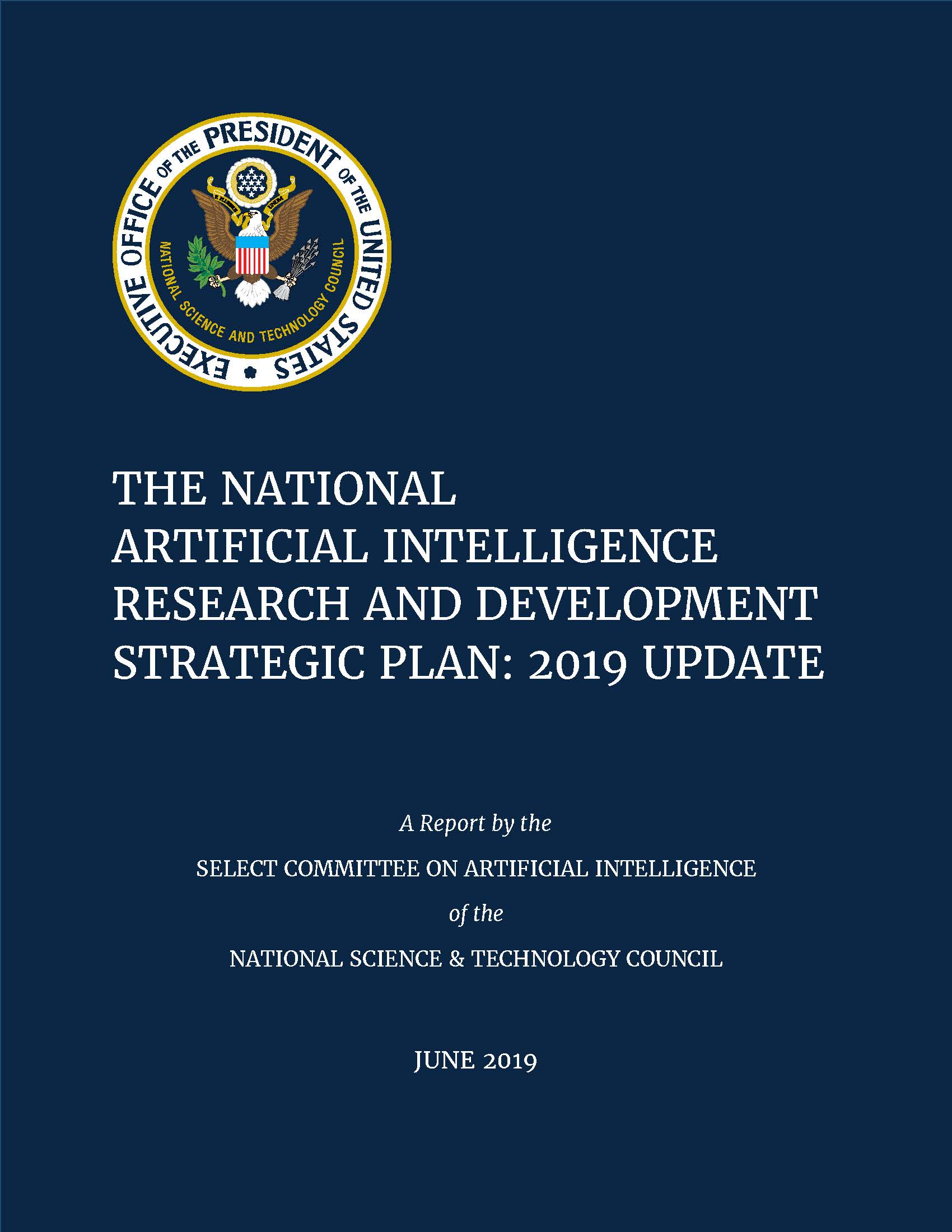White House unveils AI Action Plan in artificial intelligence – Data Protection Report

Executive Summary of the U.S. AI Action Plan and Alignment with Sustainable Development Goals
A report on the federal policy framework, “Winning the AI Race: America’s AI Action Plan,” released on July 23, 2025. This initiative outlines the United States’ strategic approach to artificial intelligence (AI), with over 90 proposed actions. The plan’s core objectives are structured to accelerate domestic innovation, modernize national infrastructure, and secure global leadership. Significantly, the framework demonstrates a strong alignment with several United Nations Sustainable Development Goals (SDGs), particularly in the areas of innovation, economic growth, education, and institutional strength.
Core Pillars and Strategic Alignment with Global Goals
Pillar 1: Accelerating Innovation for Sustainable Industrial Growth (SDG 9)
This pillar focuses on creating a robust environment for AI development, directly contributing to SDG 9 (Industry, Innovation, and Infrastructure). Key actions include:
- Increasing federal investment in AI research and development.
- Removing regulatory barriers to accelerate technological breakthroughs.
- Promoting open-source and open-weight AI models to foster widespread innovation.
- Utilizing pilot programs and federal incentives to drive AI adoption across various sectors.
Pillar 2: Building Resilient Infrastructure and Fostering Economic Growth (SDG 9 & SDG 8)
The plan emphasizes the modernization of critical infrastructure, a foundational element for both SDG 9 and SDG 8 (Decent Work and Economic Growth). Initiatives under this pillar include:
- Modernizing the national power grid to support large-scale AI deployment.
- Streamlining the permitting processes for essential facilities like data centers and semiconductor plants.
- Expanding domestic semiconductor manufacturing capabilities to build a resilient supply chain.
- Enhancing the cybersecurity of critical national infrastructure.
Pillar 3: Global Leadership and Partnerships for Peace and Sustainability (SDG 16 & SDG 17)
This pillar aims to position the U.S. as a global leader in responsible AI development, aligning with SDG 16 (Peace, Justice, and Strong Institutions) and SDG 17 (Partnerships for the Goals). Strategies include:
- Strengthening export controls on critical AI-enabling technologies to mitigate security risks.
- Promoting U.S. leadership in the development of international AI standards.
- Engaging in diplomatic efforts and supporting allied nations through secure AI infrastructure and model-sharing.
- Countering geopolitical threats to ensure global stability and security.
Key Objectives and Contributions to Sustainable Development
-
Fostering Innovation and Responsible Industrialization (SDG 9)
The plan seeks to maintain global competitiveness through increased AI research and the promotion of responsible development. This supports SDG 9 by encouraging inclusive and sustainable industrialization. It emphasizes the creation of AI systems that are transparent, reliable, and accountable, supporting the development of evaluation tools and standards for trustworthy AI in high-stakes applications.
-
Promoting Decent Work and Economic Growth (SDG 8)
A central goal is to leverage AI to drive economic growth, directly supporting SDG 8. The plan focuses on shaping AI development through federal tools like procurement and funding to foster economic opportunities. It also addresses the need for workforce transitions in sectors impacted by automation, aiming for sustainable economic productivity.
-
Ensuring Quality Education and Workforce Development (SDG 4)
To build a skilled workforce for an AI-driven economy, the plan includes initiatives that align with SDG 4 (Quality Education). It calls for the expansion of education and training programs, vocational training, and an increased supply of skilled workers in high-demand infrastructure roles, ensuring that citizens are prepared for emerging employment opportunities.
-
Strengthening Global Partnerships (SDG 17)
The framework actively promotes collaboration among government, industry, and academia, reflecting the principles of SDG 17. It encourages shared infrastructure, regulatory sandboxes, and public-private partnerships to create a robust ecosystem for knowledge exchange and accelerate AI innovation and deployment on a global scale.
-
Building Strong Institutions and Ensuring National Security (SDG 16)
The plan addresses AI governance by directing federal agencies to remove barriers to development while promoting policies that are flexible and adaptive. By focusing on mitigating national security risks related to biosecurity, cybersecurity, and foreign influence, the plan contributes to SDG 16 by fostering effective, accountable, and transparent institutions at all levels.
-
Developing Sustainable Infrastructure (SDG 9 & SDG 11)
Enhancing data infrastructure is critical to the plan’s success. By calling for the modernization of the power grid and streamlining the development of data centers, the plan supports the creation of resilient infrastructure as outlined in SDG 9 and contributes to sustainable cities and communities (SDG 11).
Implementation Framework and Future Outlook
Monitoring and Stakeholder Engagement
The plan establishes a roadmap for implementation that includes monitoring mechanisms, regular progress assessments, and continuous stakeholder engagement. Its design is intended to be adaptive, evolving in response to new technological developments and emerging challenges in the global AI landscape.
Implications for Industry and Sustainable Development
While not imposing new statutory obligations, the plan is expected to significantly influence the regulatory and commercial environment for AI. Through federal funding, procurement, and export controls, it will shape industry practices. Businesses and developers are advised to monitor policy evolution and identify opportunities to engage with federal initiatives that foster innovation, promote infrastructure growth, and align with global sustainable development objectives.
SDGs Addressed in the Article
SDG 4: Quality Education
- The article highlights the plan’s objective to build AI talent and workforce skills. This directly connects to SDG 4, which aims to ensure inclusive and equitable quality education and promote lifelong learning opportunities for all. The focus on preparing the workforce for an AI-driven economy aligns with the goal of providing relevant education for future employment.
SDG 8: Decent Work and Economic Growth
- The plan’s stated aim to “drive economic growth” and “strengthen the U.S. workforce for an AI-driven economy” clearly links to SDG 8. The article mentions initiatives for “workforce transitions in sectors impacted by automation” and increasing the supply of skilled workers, which are central to promoting sustained, inclusive, and sustainable economic growth and productive employment.
SDG 9: Industry, Innovation, and Infrastructure
- This is a central theme of the article. The plan’s three pillars—”Accelerating Innovation,” “Building AI Infrastructure,” and “Leading Globally”—are intrinsically linked to SDG 9. The text details objectives such as “increased investment in AI research and development,” “modernize critical infrastructure,” “modernizing the national power grid,” “streamlining permitting for data centers,” and “expanding domestic chip manufacturing,” all of which are core components of building resilient infrastructure and fostering innovation.
SDG 16: Peace, Justice, and Strong Institutions
- The article addresses the need for governance and regulation of AI. The objective to “modernize the legal system for synthetic media” and develop AI systems that are “transparent, reliable, and aligned with national priorities” relates to building effective, accountable, and transparent institutions. Furthermore, the focus on mitigating “national security risks,” including “biosecurity, cybersecurity, and foreign influence,” aligns with the goal of promoting peaceful and inclusive societies.
SDG 17: Partnerships for the Goals
- The plan explicitly emphasizes collaboration. The objective of “Fostering Collaboration and Partnerships” by encouraging cooperation “among government, industry, and academia” is a direct reflection of SDG 17. The article mentions “public-private partnerships,” “shared infrastructure,” and supporting “allied nations through secure AI infrastructure,” which are key mechanisms for achieving the SDGs through global and multi-stakeholder partnerships.
Specific SDG Targets Identified
Under SDG 4: Quality Education
- Target 4.4: By 2030, substantially increase the number of youth and adults who have relevant skills, including technical and vocational skills, for employment, decent jobs and entrepreneurship.
- This is identified through the plan’s objective to “expand education and training programs, provide vocational training… and increase the supply of skilled workers.”
Under SDG 8: Decent Work and Economic Growth
- Target 8.2: Achieve higher levels of economic productivity through diversification, technological upgrading and innovation.
- The article supports this target with its goal to “accelerate domestic AI development” and “drive economic growth” through technological breakthroughs.
Under SDG 9: Industry, Innovation, and Infrastructure
- Target 9.1: Develop quality, reliable, sustainable and resilient infrastructure… to support economic development and human well-being.
- This is reflected in the plan’s call to “modernize critical infrastructure,” “modernizing the national power grid,” and “streamlining permitting for data centers and semiconductor facilities.”
- Target 9.5: Enhance scientific research, upgrade the technological capabilities of industrial sectors… encouraging innovation and substantially increasing the number of research and development workers.
- The article directly addresses this by calling for “increased investment in AI research and development” and promoting “open-source and open-weight models” to accelerate breakthroughs.
- Target 9.b: Support domestic technology development, research and innovation in developing countries, including by ensuring a conducive policy environment.
- The plan’s focus on accelerating “domestic AI development” and removing “regulatory barriers to AI development” aligns with this target’s aim of supporting domestic technology and innovation.
Under SDG 16: Peace, Justice, and Strong Institutions
- Target 16.6: Develop effective, accountable and transparent institutions at all levels.
- This is identified in the plan’s emphasis on AI systems that are “transparent, reliable,” and the focus on “accountability, factual accuracy, and the responsible deployment of advanced AI models.” The establishment of “monitoring mechanisms” also supports this.
Under SDG 17: Partnerships for the Goals
- Target 17.17: Encourage and promote effective public, public-private and civil society partnerships, building on the experience and resourcing strategies of partnerships.
- The article explicitly mentions promoting “public-private partnerships,” “shared infrastructure,” and “collaboration among government, industry, and academia” as a key objective.
Indicators for Measuring Progress
Implied Indicators from the Article
- For SDG 4 (Target 4.4): The “supply of skilled workers—particularly in high-demand infrastructure roles” can serve as an indicator to measure the success of education and training initiatives.
- For SDG 8 (Target 8.2): The rate of “economic growth” attributed to AI and the “adoption [of AI] across sectors through pilot programs” are implied indicators of progress.
- For SDG 9 (Target 9.1 & 9.5): Progress can be measured by the amount of “increased investment in AI research and development,” the number of “data centers and semiconductor facilities” built, and the establishment of “pilot programs” and “shared infrastructure.”
- For SDG 16 (Target 16.6): The establishment of “monitoring mechanisms” and “regular progress assessments” are mentioned as direct methods for tracking implementation and ensuring accountability. The development of “evaluation tools” for AI is another concrete indicator.
- For SDG 17 (Target 17.17): The number of “public-private partnerships,” “pilot programs,” and “regulatory sandboxes” established would be a direct indicator of increased collaboration.
SDGs, Targets, and Indicators Analysis
| SDGs | Targets | Indicators (Identified or Implied in the Article) |
|---|---|---|
| SDG 4: Quality Education | 4.4: Increase the number of youth and adults with relevant technical and vocational skills for employment. | Increased “supply of skilled workers” in AI and related fields; Number of people in “expanded education and training programs.” |
| SDG 8: Decent Work and Economic Growth | 8.2: Achieve higher levels of economic productivity through technological upgrading and innovation. | Rate of “economic growth” driven by AI; Rate of AI “adoption across sectors.” |
| SDG 9: Industry, Innovation, and Infrastructure | 9.1: Develop quality, reliable, sustainable and resilient infrastructure. 9.5: Enhance scientific research and upgrade technological capabilities. 9.b: Support domestic technology development, research and innovation. |
Amount of “investment in AI research and development”; Modernization of the “national power grid”; Number of new “data centers and semiconductor facilities”; Number of “pilot programs” and “shared infrastructure” projects. |
| SDG 16: Peace, Justice, and Strong Institutions | 16.6: Develop effective, accountable and transparent institutions at all levels. | Establishment of “monitoring mechanisms” and “regular progress assessments”; Development of “evaluation tools” and “testing infrastructure” for AI accountability. |
| SDG 17: Partnerships for the Goals | 17.17: Encourage and promote effective public, public-private and civil society partnerships. | Number of “public-private partnerships” formed; Number of “pilot programs” and “regulatory sandboxes” established through collaboration. |
Source: dataprotectionreport.com

What is Your Reaction?
 Like
0
Like
0
 Dislike
0
Dislike
0
 Love
0
Love
0
 Funny
0
Funny
0
 Angry
0
Angry
0
 Sad
0
Sad
0
 Wow
0
Wow
0



































































_21.jpg?#)









